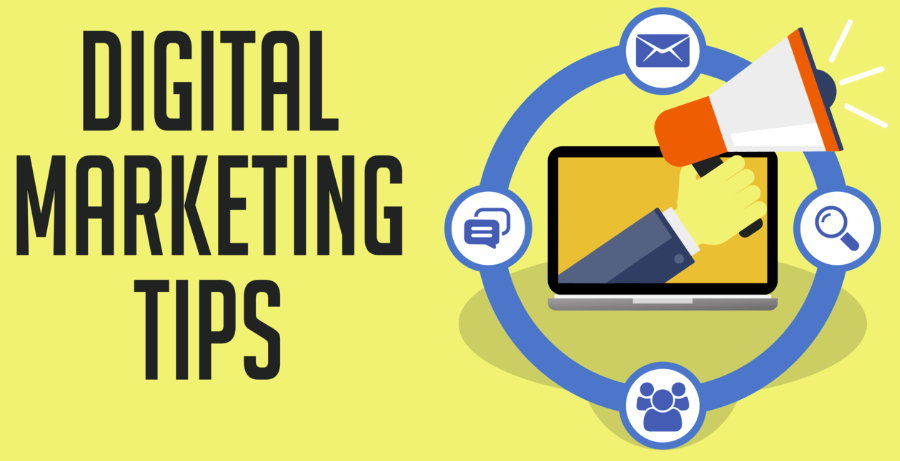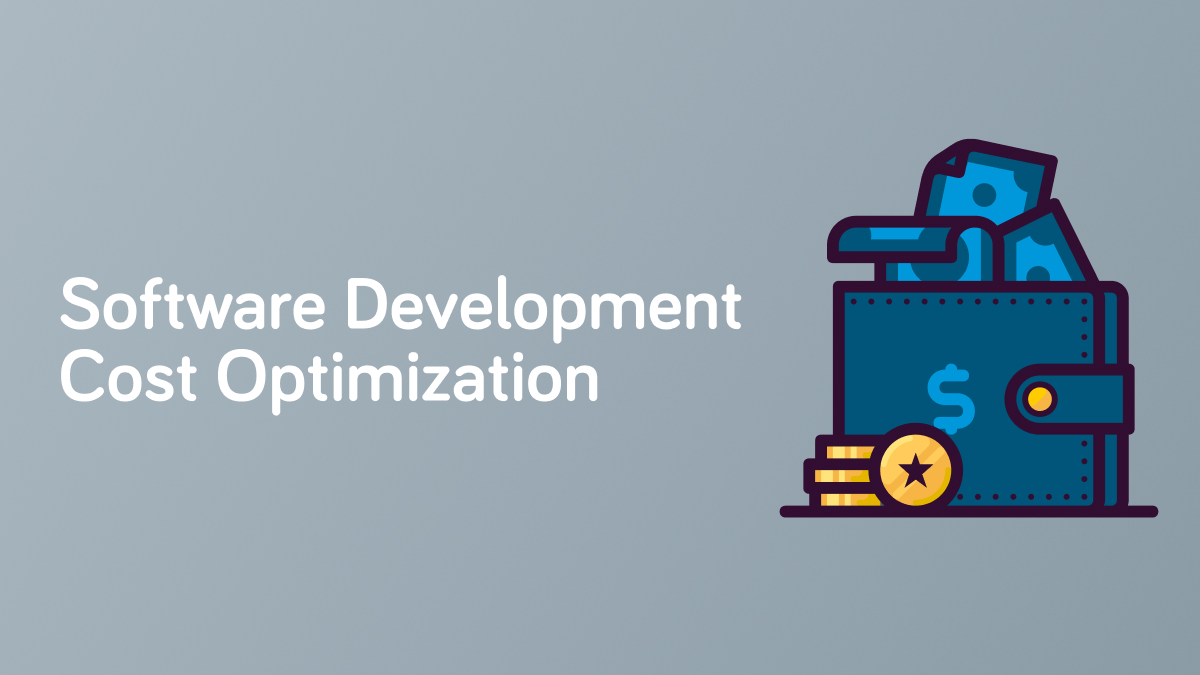Digital marketing is changing how businesses connect with people today. Businesses can establish a direct and immediate connection with consumers through targeted advertisements, social media campaigns, and personalized content. Since many people use smartphones and the internet, digital marketing helps brands reach target audiences and become more visible. No wonder digital marketing tips are crucial in 2024 to stay ahead in the competitive landscape. As they provide actionable insights for leveraging online platforms effectively, reaching target audiences, and adapting to evolving consumer behaviors.
If you’re a business owner navigating the vast digital landscape and finding yourself without a clear strategy, fear not! To help you navigate the ever-evolving world of digital marketing, we’ve compiled a list of 10 actionable tips in this blog. So, that can elevate your strategy and boost your online presence.
But, before discussing these 10 important digital marketing tips, firstly, we’ve to understand what digital marketing is. Also, what are the types of digital marketing?
Understanding Digital Marketing Tips
What is digital marketing?
Digital marketing entails using the internet and online tools to advertise and sell goods or services. It involves things like:
- Social media advertising
- Websites creation
- Emailing potential customers about your product.
- Google search engines
- Text messages
Digital marketing helps companies reach consumers on a more personal level when compared to traditional means. The beauty of it is that businesses can tell how well they are doing with their campaigns which makes it easier for them to improve upon these efforts hence reaching more people.
5 Important types of digital marketing
Content Marketing:
Content marketers create and provide valuable content in order to attract and engage specific audiences over time. Businesses share relevant and engaging materials via blogs, videos, and podcasts among others to captivate their audience. It’s not just about selling; it’s about building relationships. By consistently delivering content that informs and entertains, companies become authorities in their field, earning trust and loyalty from their customers.
Social Media Marketing (SMM):
SMM gets businesses closer to their target market through platforms such as Facebook, Instagram, Twitter, or LinkedIn. They don’t just showcase their products but also build a brand image by creating engaging posts as well as targeted advertising. Social media platforms connect businesses with consumers at an emotional level.
Email Marketing:
Email marketing entails sending emails that appeal specifically to certain groups of people. This method nurtures leads eventually leading to sales conversions because emails can be personalized. By sending well-crafted emails, firms not only tell people about their products and services but also give them something of value in return. This is a two-way street where brands create engaging content based on the preferences and interests of their audiences thereby building a sense of loyalty and belonging.
Influencer Marketing:
Influencer marketing is different from other advertising methods because it involves using individuals who are highly regarded in the digital world as advertising instruments. These influencers are trusted voices with established credibility. When they collaborate with these influencers, businesses can tap into their audience to build their brand. In this way, they build brand awareness and credibility through genuine recommendations.
Pay-Per-Click Advertising (PPC):
This is the fastest and most measurable way for businesses to get in front of your audience. Businesses bid on keywords and make compelling ads, so they only pay if someone clicks their ad. Doing PPC ensures that advertising budgets are well spent either to increase sales or lead generation. It’s a strategic tool for driving such traffic and meeting specific marketing objectives.
Why are digital marketing tips important in 2024?
Digital marketing tips are crucial in 2024 to stay ahead in the rapidly evolving online landscape. Utilizing digital marketing tips ensures that companies can adapt to changing consumer behaviors and preferences. Below are some vital reasons why we still need digital marketing tips beyond 2023.
1. Adapt to Changing Trends
In 2024, digital marketing tips remain crucial as they help businesses adapt to constantly evolving trends in the online landscape. Staying updated with the latest strategies ensures companies can effectively reach their target audience and stay ahead of the competition.
2. Enhance Brand Visibility
Digital marketing tips are essential for enhancing brand visibility in a crowded online marketplace. By employing effective SEO techniques, creating engaging content, and leveraging social media platforms, businesses can increase their online presence and attract more potential customers.
3. Improve Customer Engagement
With the right digital marketing tips, businesses can improve customer engagement and foster stronger relationships with their audience. Utilizing interactive content, personalized messaging, and timely responses to customer inquiries can help enhance the overall customer experience and increase brand loyalty.
4. Drive Website Traffic
Digital marketing tips play a vital role in driving traffic to business websites. By optimizing for search engines, utilizing targeted advertising campaigns, and creating compelling call-to-actions, companies can attract more visitors to their sites and increase the likelihood of conversions.
5. Generate Quality Leads
In 2024, digital marketing tips are essential for generating quality leads that are more likely to convert into paying customers. By implementing lead generation strategies such as email marketing, content marketing, and social media advertising, businesses can attract prospects who are genuinely interested in their products or services.
6. Analyze and Optimize Performance
Digital marketing tips empower businesses to analyze and optimize the performance of their online campaigns. By utilizing analytics tools, tracking key metrics, and conducting A/B testing, companies can identify what strategies are working well and make data-driven decisions to improve their overall marketing efforts.
7. Stay Ahead of Competitors
In a competitive digital landscape, staying ahead of competitors is crucial for business success. Digital marketing tips provide valuable insights and strategies that can help businesses differentiate themselves, stand out from the crowd, and maintain a competitive edge in their industry.
10 easy and effective digital marketing tips for beginners
1. Understand Your Target Audience
One of the foundational pillars of effective digital marketing tips is a deep understanding of your target audience. It involves digging deeper into the demographics, preferences, and actions of the people you are targeting with your marketing strategies. Consequently, it will enable you to modify your messages or campaigns to resonate efficiently with the customer base.
For instance, think about a firm selling fitness apparel for young adults between 18 and 30 years old. After doing extensive research on their customers’ demographic traits they may realize that most of them live in urban areas and have a passion for environmental conservation. As a result, this will help the company to create its communication materials around using eco-friendly raw materials. While at the same time showcasing various forms of exercises that young people carry out in cities including urban workout settings.
Additionally, tools like Google Analytics as well as social media insights could be used to gather significant information. It enhances one’s understanding of their potential customers. For instance, Google Analytics can provide vital details about users including age groups and other demographics as well as their interests and browsing habits.
Marketers use such findings to make more personal campaigns that appeal to their audience. By creating higher engagement rates, better conversion rates, and loyalty toward brand(s). Thus; understanding your target audience is critical in digital marketing since it enables companies to link with consumers on a broad spectrum ultimately delivering results that matter.
2. Tap into Social Media Power
The social media has become a powerful advertising channel with a huge user base. Due to its vast reach and influence from platforms such as Facebook, and Instagram among others. To make good use of social media channels effectively organizations should first know where they find most of their intended users.
For example; assuming there was a fashion brand focusing on millennials and Generation Z who have been able through market research to discover that Instagram and TikTok are the main social platforms where they spend most time. Having this knowledge at hand would mean that the brand focuses on creating great content that suits the various platforms’ unique formats and audience preferences.
Engaging posts are significant in attracting users and creating an impact on social media. This may involve aesthetically pleasing images, videos, stories, polls as well as user-generated content that connect with customers’ needs and desires of the target audience.
In addition to this, social media marketing also demands consistency. Regularly posting fresh content helps keep the brand at the top of a customer’s mind and maintains customer engagement. Therefore; businesses need to go beyond just posting and actively communicating through responding promptly to comments, messages, or even mentions from their audience. Establishing real relationships between followers creates loyalty towards brands which in turn makes them recommend your products freely within their peer groups.
On top of these; social media ads are powerful tools for targeting specific portions of consumers in a business effectively. Using sponsored posts, targeted ads, or even paid campaigns can increase brand reach and get more traffic to your website for more sales and conversions.
3. Optimize Your Website for Search Engines
Optimizing your website for search engines is fundamental in today’s digital landscape, where online visibility can make or break a business’s success. Search engine optimization (SEO) entails a series of strategies aimed at improving your website’s ranking in search engine results pages (SERPs) for relevant keywords and phrases. By aligning your website’s content with the interests and intents of your target audience, you increase the likelihood of attracting organic traffic and potential customers.
One crucial aspect of SEO is conducting thorough keyword research to identify the terms and phrases your audience is using to search for products or services related to your business. For example, suppose you run an online pet store specializing in organic pet food. In that case, your keyword research might reveal popular search queries such as “best organic pet food,” “natural dog treats,” or “healthy cat food brands.” By understanding these search trends, you can tailor your website content to address these queries effectively.
Once you’ve identified relevant keywords, it’s essential to strategically incorporate them into various elements of your website, including:
Content: Develop high-quality, informative content that naturally incorporates your target keywords while providing value to your audience. This content can take the form of blog posts, product descriptions, FAQs, or guides related to your industry.
Meta Tags: Optimize meta tags, including title tags and meta descriptions, to accurately reflect the content of each page while incorporating relevant keywords. These tags serve as the snippets that appear in search engine results and can significantly impact click-through rates.
Images: Use descriptive file names and alt tags for your website’s images to make them more discoverable in image search results. Incorporating keywords into these tags helps search engines understand the context of your images and improve overall website visibility.
Regularly updating your website with fresh, relevant content is another critical aspect of SEO. Search engines prioritize websites that consistently provide valuable and up-to-date information to users. By publishing new blog posts, product updates, or industry insights regularly, you signal to search engines that your website is active and authoritative within your niche.
Additionally, optimizing your website’s technical aspects, such as site speed, mobile responsiveness, and internal linking structure, can further enhance its search engine performance. Search engines prioritize user experience, so ensuring that your website loads quickly and functions seamlessly across devices is essential for maintaining high rankings.
4. Invest in Quality Content Creation
Investing in quality content creation is a cornerstone of effective digital marketing tips. As it plays a pivotal role in engaging audiences, building brand authority, and driving organic traffic to your website. High-quality content serves as the foundation upon which successful digital marketing campaigns are built, resonating with your target audience and compelling them to take action.
One of the primary benefits of quality content is its ability to address the needs and interests of your target audience effectively. By understanding your audience’s pain points, interests, and preferences, you can create content that provides valuable solutions, insights, or entertainment. For example, suppose you operate a software company specializing in productivity tools for remote workers. In that case, you might create blog posts offering tips for optimizing remote work efficiency, video tutorials demonstrating the features of your software, or infographics illustrating remote work statistics and trends.
Diversifying your content formats is key to catering to different audience preferences and consumption habits. Whether it’s blog posts, videos, infographics, podcasts, or interactive quizzes, offering a variety of content types keeps your audience engaged and ensures your message reaches them through their preferred channels. For instance, some users may prefer consuming information through visual content like infographics or videos, while others may prefer in-depth written articles or podcasts they can listen to on the go.
Moreover, quality content has the potential to drive significant organic traffic to your website through search engines and social media. Search engines prioritize content that is relevant, informative, and valuable to users, rewarding websites with higher rankings in search results. By optimizing your content for relevant keywords and promoting it strategically on social media platforms, you can attract a steady stream of organic traffic over time.
5. Embrace Video Marketing
Video content has become increasingly popular, with platforms like YouTube, TikTok, and Instagram Reels dominating user engagement. Incorporate video marketing into your strategy to captivate your audience and deliver your message visually compellingly. From tutorials to behind-the-scenes glimpses, explore diverse video formats to keep your audience engaged.
Embracing video marketing has become imperative in today’s digital landscape, where visual content reigns supreme in capturing audience attention and driving engagement. With platforms like YouTube, TikTok, and Instagram Reels experiencing exponential growth in user engagement, businesses must incorporate video content into their marketing strategies to stay relevant and connect with their audience effectively.
One of the primary advantages of video marketing is its ability to captivate audiences and convey messages in a visually compelling manner. Unlike text-based content, videos have the power to evoke emotions, tell stories, and showcase products or services in action, making them highly engaging and memorable. For example, suppose you run a cooking school and want to promote your online courses. In that case, you could create video tutorials demonstrating cooking techniques, sharing recipes, and offering behind-the-scenes glimpses of your classes. These videos not only provide valuable information but also entertain and inspire viewers, increasing their likelihood of engaging with your brand and ultimately converting into customers.
Furthermore, video marketing offers unparalleled versatility in terms of content formats, allowing businesses to explore a wide range of creative approaches to engage their audience. From educational tutorials and product demonstrations to customer testimonials and brand storytelling, the possibilities are endless. By experimenting with diverse video formats, businesses can cater to different audience preferences and deliver content that resonates with their target demographic.
Incorporating video marketing into your strategy also presents opportunities to leverage the unique features and algorithms of various social media platforms. For instance, platforms like TikTok and Instagram Reels are designed for short-form, snackable content, making them ideal for capturing attention quickly and driving engagement with concise and visually appealing videos. On the other hand, platforms like YouTube offer longer-form content opportunities, allowing businesses to dive deeper into topics, showcase expertise, and build a loyal subscriber base.
Moreover, video marketing has proven to be highly effective in increasing brand awareness, driving website traffic, and boosting conversions. According to recent studies, consumers are more likely to engage with and share video content compared to other forms of media, making it a powerful tool for expanding reach and building brand visibility.
6. Utilize Email Marketing Effectively
One of the key digital marketing tips for effective email marketing is personalization. By tailoring email content to individual recipients based on their preferences, behaviors, and past interactions with your brand, you can create a more engaging and relevant experience for subscribers. For example, an e-commerce retailer could personalize email recommendations based on a customer’s past purchases, browsing history, or demographic information, increasing the likelihood of them making a purchase.
Segmentation is another essential aspect of successful email marketing campaigns. By dividing your email list into smaller, more targeted segments based on criteria such as demographics, purchase history, or engagement level, you can send more relevant and targeted content to each group of subscribers. For instance, a clothing retailer could segment their email list by gender and send tailored product recommendations or promotions to male and female subscribers separately, ensuring they receive content that aligns with their interests and preferences.
Furthermore, automation plays a crucial role in streamlining and optimizing email marketing efforts. Automated email workflows allow businesses to send timely and relevant messages to subscribers based on predefined triggers or actions, such as sign-ups, purchases, or website visits. For example, a subscription-based service could set up an automated welcome email series to new subscribers, introducing them to the platform’s features, offering helpful tips, and encouraging them to explore further.
Delivering relevant and timely content is key to maximizing the effectiveness of email marketing campaigns. By providing subscribers with valuable information, exclusive offers, and personalized recommendations, businesses can strengthen customer relationships, increase engagement, and drive conversions. For example, a software company could send regular email newsletters featuring industry insights, product updates, and tips for maximizing software usage, demonstrating value to subscribers and keeping them engaged with the brand.
7. Implement Influencer Marketing
Implementing influencer marketing can be a highly effective strategy for businesses looking to expand their reach, build credibility, and generate interest in their products or services. Influencers, who have cultivated dedicated followings on social media platforms, can serve as powerful advocates for brands. They leverage their authority and authenticity to engage with their audience in a meaningful way.
One of the key benefits of influencer marketing is the ability to tap into the trust and rapport that influencers have established with their followers. By collaborating with influencers whose audience aligns with your target market, you can leverage their existing relationships and credibility to introduce your brand to a new audience segment. For example, suppose you own a skincare brand targeting young adults interested in natural beauty products. In that case, partnering with influencers known for their expertise in skincare and wellness can help you reach and engage with your ideal customers effectively.
Authenticity is paramount in influencer marketing, as today’s consumers value transparency and genuineness from brands and influencers alike. When selecting influencers to collaborate with, prioritize those whose values, aesthetics, and content align closely with your brand identity. Authentic endorsements from influencers who genuinely believe in your products or services are more likely to resonate with their audience and drive meaningful engagement.
Influencer marketing campaigns can also be highly scalable and measurable, allowing businesses to track the performance and ROI of their collaborations effectively. By leveraging data analytics and tracking tools, brands can monitor key metrics such as engagement rates, reach, conversions, and return on investment, enabling them to optimize their influencer partnerships and allocate resources more efficiently.
8. Emphasize Mobile Optimization
Emphasizing mobile optimization is imperative in today’s digital landscape, where the majority of internet users access content and engage with brands through their smartphones and tablets. With mobile devices becoming the primary means of online interaction for many consumers, ensuring that your digital assets are optimized for mobile is non-negotiable for businesses seeking to provide a seamless and user-friendly experience.
One of the primary aspects of mobile optimization is ensuring that your website is responsive and mobile-friendly. This means that your website should adapt seamlessly to different screen sizes and resolutions, providing users with an optimal viewing experience across various devices. For example, text should be easy to read without zooming, buttons and links should be easily clickable, and images should load quickly without compromising quality. Additionally, features such as navigation menus and forms should be optimized for touch interactions, allowing users to navigate and interact with your website effortlessly.
Moreover, optimizing your email marketing campaigns for mobile is essential for ensuring that your messages are accessible and engaging to recipients on mobile devices. This includes using responsive email templates that adjust automatically to different screen sizes, optimizing images and fonts for mobile viewing, and ensuring that calls-to-action are prominently displayed and easy to tap. By prioritizing mobile optimization in your email marketing efforts, you can enhance the user experience and increase the effectiveness of your campaigns.
In addition to website and email optimization, it’s essential to ensure that your advertisements are also mobile-friendly. Whether you’re running display ads, social media ads, or search ads, optimizing your ad creatives and landing pages for mobile devices can significantly improve their performance and conversion rates. This may involve creating ad copy that is concise and easy to read on small screens, using high-quality images and videos that load quickly on mobile devices, and ensuring that landing pages are optimized for fast load times and seamless navigation.
9. Monitor and Analyze Key Metrics
Regularly monitor key performance indicators (KPIs) to assess the effectiveness of your digital marketing efforts. Track metrics such as website traffic, conversion rates, and social media engagement. Analyzing this data can help you identify areas for improvement and refine your strategy for better results. Being proactive and adapting to the latest trends can give you a competitive edge and ensure your strategies remain relevant.
10. Test and Iterate Your Strategies
Digital marketing success often comes from a process of trial and error. A/B testing allows you to experiment with different strategies, from ad copy to email subject lines. Analyze the results and iterate on what works best for your audience. Continuous testing and optimization are essential for staying ahead in the digital marketing game.
In conclusion, implementing these 10 digital marketing tips can position your business for success in 2024. By understanding your audience, the power of social media, optimizing for search engines, and embracing the latest trends, you can create a robust and effective digital marketing strategy that drives growth and fosters long-term success.




